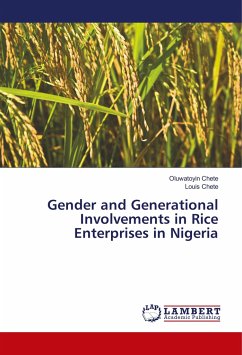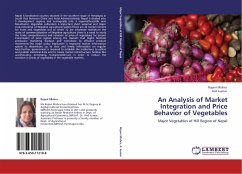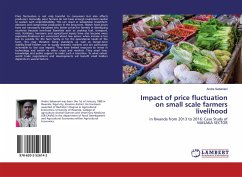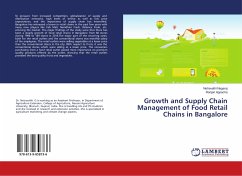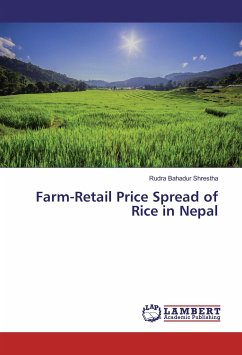
Farm-Retail Price Spread of Rice in Nepal
Versandkostenfrei!
Versandfertig in 6-10 Tagen
27,99 €
inkl. MwSt.

PAYBACK Punkte
14 °P sammeln!
This book incorporates analyzing the marketing practices, pricing behavior, and farm-retail price spread of rice in Nepal on the basis of survey data collected in 2008. Inefficient marketing practices increase the gap between the price received by farmers and price paid by the consumers that hurt both farmers and consumers, is one of the prominent issues of smallholder farmers in the least developed and developing countries. The study revealed that the marketing margin is higher in the farm-wholesale markets compared to the wholesale-retail markets. There is a lengthy marketing channel and inv...
This book incorporates analyzing the marketing practices, pricing behavior, and farm-retail price spread of rice in Nepal on the basis of survey data collected in 2008. Inefficient marketing practices increase the gap between the price received by farmers and price paid by the consumers that hurt both farmers and consumers, is one of the prominent issues of smallholder farmers in the least developed and developing countries. The study revealed that the marketing margin is higher in the farm-wholesale markets compared to the wholesale-retail markets. There is a lengthy marketing channel and involvement of larger numbers of marketing agents that led the marketing cost to be much higher. The Relative Price Spread (RPS) model showed that the marketing cost, wholesale price of rice, retail prices of rice, and market information to the farmer significantly influence the marketing margin. Reducing in the transportation cost, improving the market information system, and empowering farmers in price determination help reduce the farm-retail price spread of rice in Nepal.



